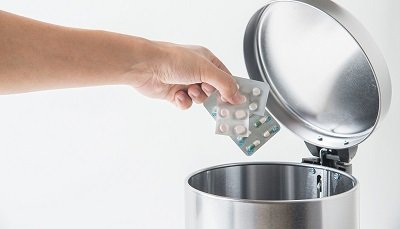Disposal of Unused Medicines Programme – Reflections

I ran into an official of the Health Ministry recently. Edward, the Disposal of unused/unwanted medicines programnme (DUMP) came up in discussions Safe use Medicines. There were discvussions also on measures to safeguard institutions from counterfeit and fake medicines. I am on way to a meeting with a group, Medisafe, who have been doing some work on counterfeit medicines. It will be useful to share your experiences with participants. I know the notice is short and your schedule tight but it will be worthwhile sharing your experiences with the group.
So, that is how I was literally dragged into the meeting. It was really useful. There was a question on how the Disposal of Unused/Unwanted Medicines Programme (DUMP) started at Cocoa Clinic. I still remember that day. A typical diabetes clinic day. A number of these clients have both diabetes and hypertension. A client was being served his medications when he pointed at one of the them (it was Metformin). Please take this one out of the pile, I have plenty at home. This triggered alarm bells.
Prescriptions for such clients are usually for 2 months. Clients usually come for review and refill at the clinic. The question is why did the client have so much Metformin at home to the extent that he will probabnly not need a refill for more than two months? Does he take the medicines as scheduled? Are there issues of non-adherence to therapy? If there were, were there issues of untoward effects of the medicines with an impact on adherence? Did he receive some Metformin from other sources? This was a client of a corporate entity and by arrangement with the Clinic did not have to pay cash upfront for medicines. Were there other clients with similar issues at home? This gave birth to the Disposal of Unused/Unwanted Medicines Programme (DUMP).
We liaised with the Food & Drug Authority (FDA) who were in full support of the programme. The managers of the country’s Medicines Policy were also very supportive of the programme. There were series of Educational Programmes at the clinic to sensitize clients about the DUMP. I recall when we went round that clients pulled desk drawers to bring out antibiotics which had been prescribed for some infections but had stopped taking them when they felt better. We used the findings to educate clients about the rational use of antibiotuics,- dosing, frequency of dosing and the need to complete the course of therapy to prevent the development of resistance. Some feedbacks from clients were interesting. Someone said I was given this antibiotic for a boil and told to take it every 6 hours. The first dose for the day was not a problem but the second and third doses were difficult to adhere to. So Iusually took the second, third and fourth doses together at night. This was wrong! An antibiotic such as Flucloxacillin which was what was prescribed for the client is a time-dependent antibiotic. It means the antibiotic has to be dosed frequently in order to maintain a certain minimum inhibitory concentration (MIC) to kill the organism responsible for the infection. Failing to take the second and third doses at the specified times drops the concentration too low below the MIC and could lead to the development of resistance.
We also found several antihypertensives being kept by the same person. The person may have had high blood pressure (hypertension) first and then put on Bendrofluazide. The person then may have developed diabetes along the line. In order to protect the kidneys (from the effects of diabetes), the bendrofluazidfe was dropped and replaced with Lisinopril. At the time the blood pressure was such that only one antihypertensive was inadequate to control the blood pressure and so Amlodipine was added to the Lisinopril. Meanwhile there is no facility to retrieve the bendrofluazide originally being used by the person. I have seen situations were such unused/unwanted medicines have been the causes of accidental poisoning of children at home. We came across a client, a hypertensive who worked in a bakery and kept the antihypertensivwes at the bakery with undue exposure to heat. The blood pressure was hardly under control till he removed the medicines from the bakery (the workplace). Many medicines have this label, “to be stored in a cool dry place, away from light”. Drug-induced photosensitivity refers to the development of cutaneous disease as a result of the combined effects of a chemical and light (Medscape June 12, 2018). Exposure to either the chemical or the light alone is not sufficient to induce the disease, however, when photoactivation of the chemical occurs, one or more cutaneous manifestations may arise.Photosensitivity reactions may result from systemic medications and topically applied compounds. You will be surprised, dear reader, at the medicines which are photosensitive, e.g. Tetracycline, Doxycycline, Ciprofloxacin, Levofloxacin, Ibuprofen, Naproxen, Celecoxib, Frusemide, Glibenclamide, Atorvastatin, Itraconazole, Griseofulvin, Chlorpromazine, Fluphenazine.
We developed DUMP flyers to inform, educate clients on the rationale behind DUMP. The initial purpose of DUMP was to retriev unused medicines for safe disposal. But like so many things in every venture, there have been several spin offs, e.g. improved patient counselling, improved labeling, improved adherence, better understanding of work at the pharmacy, among others. We have since had collaborations with other health institutions in the country. I believe there are great opportunities for scale up within the country because unused/unwanted medicines is real issue at many homes.
DR. EDWARD O AMPORFUL
CHIEF PHARMACIST
COCOA CLIMNICV




